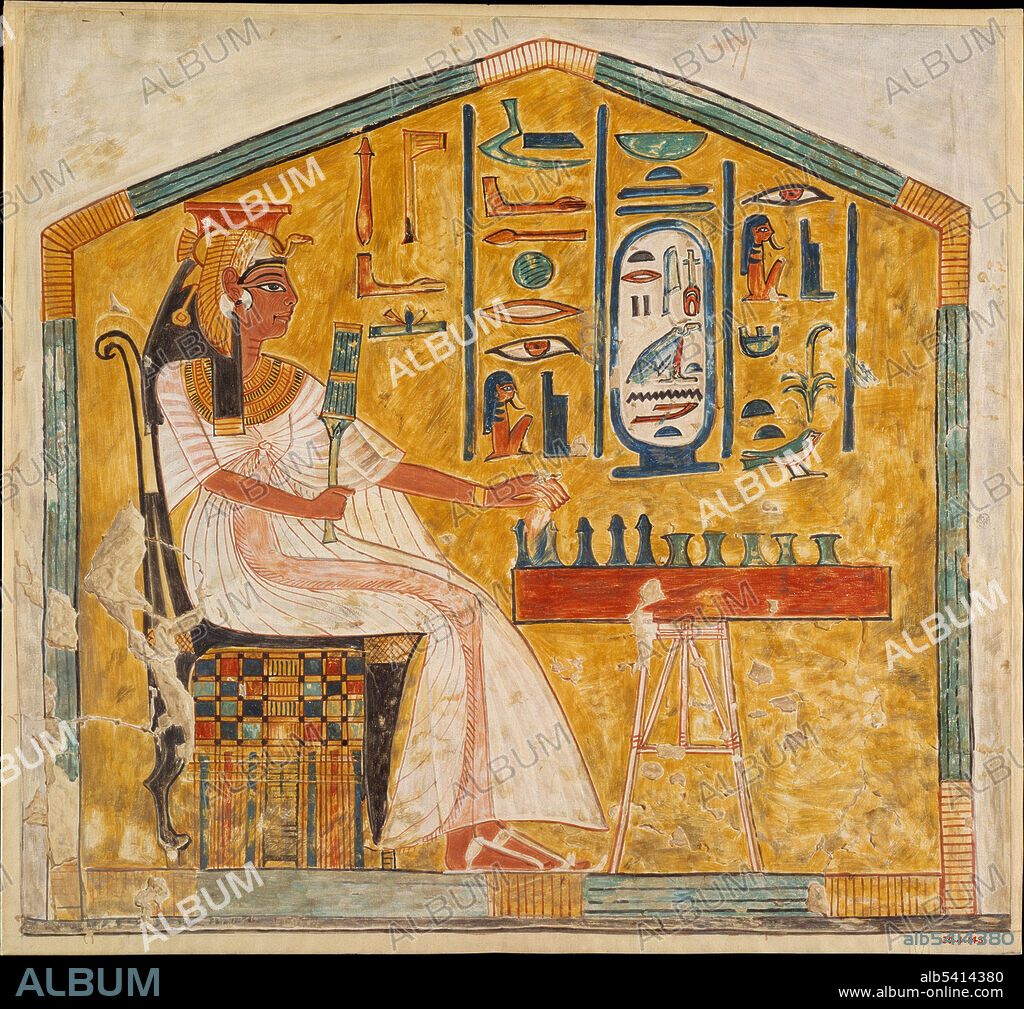alb5414380
Egyptian tomb scene, illustration

|
Add to another lightbox |
|
Add to another lightbox |



Title:
Egyptian tomb scene, illustration
Caption:
Egyptian tomb scene, illustration. This scene shows Queen Nefertari playing the board game senet, as depicted on the walls of the tomb of Nefertari. It dates from the New Kingdom (Dynasty 19), during the reign of Ramesses II, in around 1279-1213 BC. This tomb is in the Valley of the Queens, Thebes, Upper Egypt. Nefertari was the Great Royal Wife, or principal queen, of Ramesses II. The queen sits in front of a table playing a game of senet again an invisible opponent. This was a popular game in life, but when represented in a tomb, as here, it has symbolic meaning. The word senet means 'passing' and the game was seen as a parallel to the journey into the afterlife and the obstacles one had to overcome on the way. Nefertari wears an elaborately pleated and fringed gown of sheer linen. She also wears a gold bracelet, a broad collar, and what are probably silver earrings. On her head is the vulture headdress of a queen. This illustration (tempera on paper) was produced in 1921-22 by Egyptologist Nina de Garis Davies (1881-1965) on an expedition for the Metropolitan Museum of Art.
Credit:
Album / Science Source / Metropolitan Museum of Art
Releases:
Model: No - Property: No
Rights questions?
Rights questions?
Image size:
3100 x 2893 px | 25.7 MB
Print size:
26.2 x 24.5 cm | 10.3 x 9.6 in (300 dpi)
Keywords:
1900S • 1921 • 1922 • 1990S • 20 XX TWENTIETH CENTURY • 20TH CENTURY • 20TH • 2ND MILLENNIUM BC • 90S • AFRICA • AFRICAN CONTINENT • AFRICAN • ANCIENT EGYPT • ANTIQUITY • ARCHAEOLOGY • ART • BIBAN EL-MALIKAT • BOARD GAME • C046/2140 • C0462140 • CLASSICAL • DYNASTY 19 • EGYPT • EGYPTIAN • EGYPTOLOGY • FRIEZE • GAME • GREAT ROYAL WIFE • HEADDRESS • HIEROGLYPH • HIEROGLYPHICS • HIEROGLYPHS • HISTORY • JOURNEY INTO THE AFTERLIFE • METROPOLITAN MUSEUM OF ARTC0462140. JPG • NEFERTARI • NEW KINGDOM • NINA DE GARIS DAVIES • NINETIES • NINETIES, THE • NINETY DECADE • NO ONE • NO-ONE • NOBODY • NORTH AFRICA • PHARAONIC • PLAYING • QUEEN NEFERTARI • QV 66 • RELIGION • ROYALTY • SCENE • SENET • SYMBOL • TEMPERA • THÈBES • TOMB OF NEFERTARI • TOMB • TWENTIETH CENTURY • VALLEY OF THE QUEENS
 Pinterest
Pinterest Twitter
Twitter Facebook
Facebook Copy link
Copy link Email
Email

